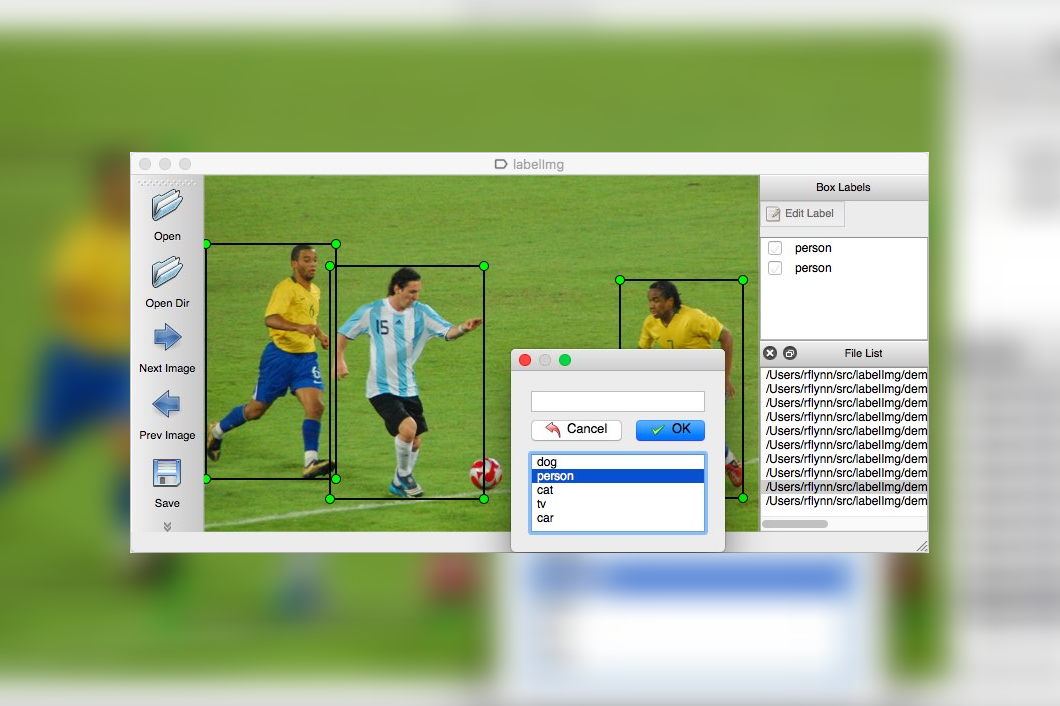LabelImg is a lightweight and easy-to-use image annotation tool to label object bounding boxes in images. This article provides an overview of LabelImg, when to use it, and how to annotate multiple images easily. Choosing the right image annotation software is critical for the long-term success of computer vision applications. Therefore, this guide aims to support your evaluation to find the best image annotation software for your current and future projects.
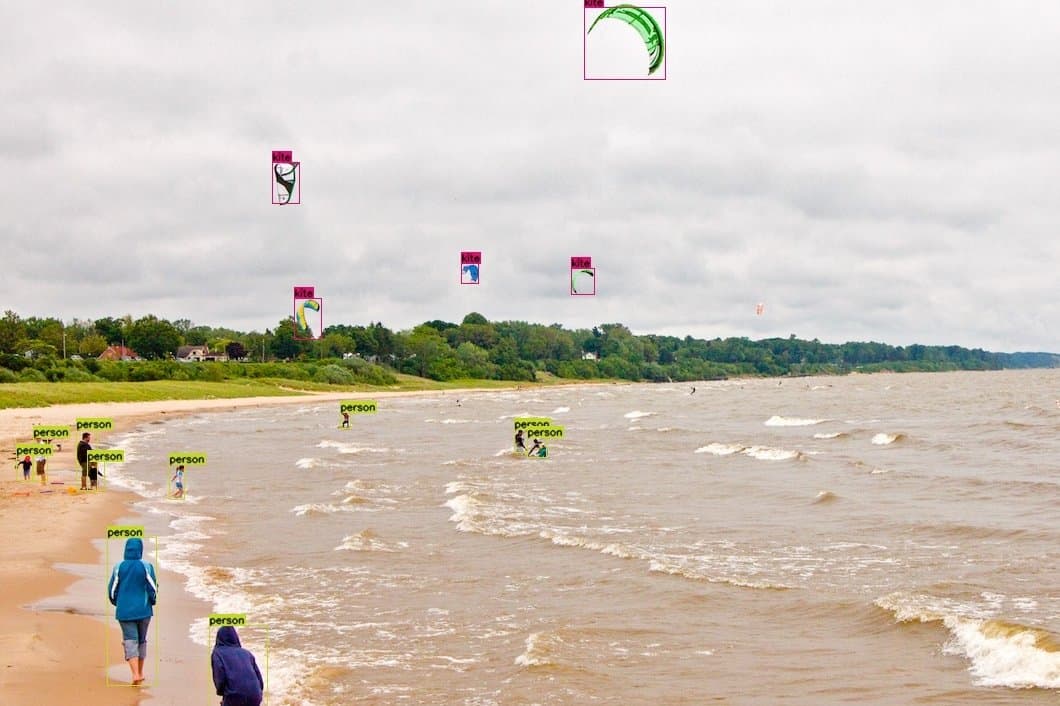
What Is Image Annotation?
In machine learning (ML) and deep learning (DL), image annotation is the technique of labeling or categorizing single images using annotation text, software tools, or both to display the data features you want your ML/DL model to identify on its own. When you conduct image annotation, you are adding metadata to a dataset to specify the ground truth.
Put simply, image annotation is a kind of data labeling often referred to as tagging, processing, or transcribing. The method of image annotation applies to both image and video annotation. Just like a set of images, the videos can also be annotated continuously, like an image feed or frame by frame.
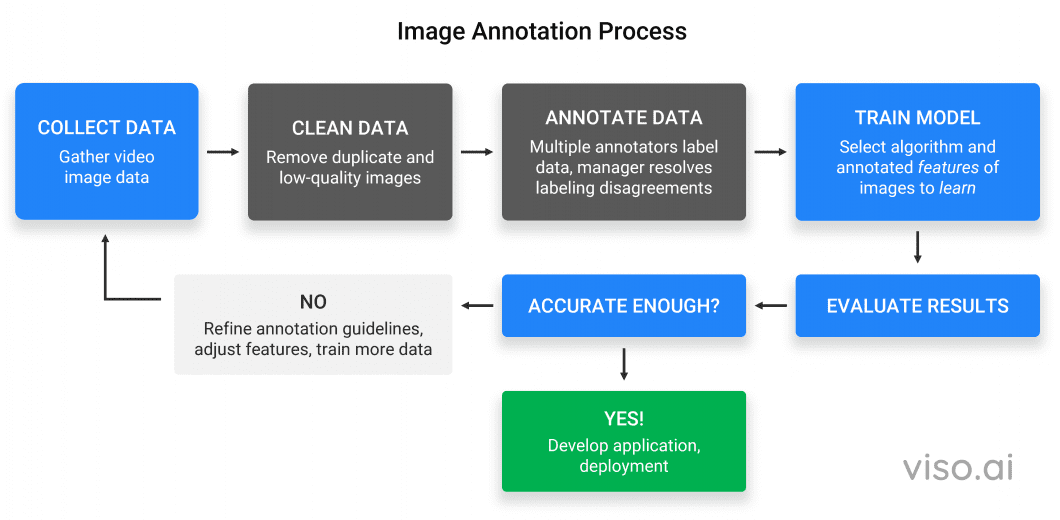
Image annotation defines the features you want your ML or DL system to identify. You can use these images to train your model through supervised learning algorithms. Once you deploy the AI model as part of a computer vision application, you want it to be able to perform image recognition on images that haven’t been annotated and, subsequently, make a decision or take the necessary action.
This technique is mainly used to identify objects and boundaries and later categorize them, for instance, meaning or whole-image understanding. It takes a considerable amount of time to train, validate, and evaluate a model to get the expected result for all these applications.
Types of Image Annotation
- Simple Image Annotation: This technique may include labeling an image with words that best represent the objects mentioned in it. For instance, you might annotate the picture of a dog with the label “domestic house dog.” This is also referred to as image classification or tagging.
- Complex Image Annotation: It is defined as a type of image annotation that can be used to recognize, count, or track more than one object or region in an image. The complexity of your annotation will differ based on the complexity of your project. For instance, you might annotate the difference between dog breeds: perhaps you’re training an ML model to identify the difference between an Alaskan Malamute and a Husky dog. Both classes are dissimilar and can be labeled as such.
Now that we have a basic understanding of image annotation, let’s move on to the most well-known software tool to annotate images — LabelImg.
Selecting the Right Image Annotation Software
The images you use to train, authenticate, and test your computer vision (CV) algorithms will hugely influence the success of your AI or machine learning (ML) project. Each image in your dataset must be mindfully and precisely labeled to train an AI or ML system to identify objects in a way that humans do. The higher the quality of your annotations, the better your AI and Machine Learning models are likely to perform.
While the amount and variety of your image data will grow with time, getting images annotated as per your requirements can be an issue that thwarts your project. Your choices concerning your image annotation techniques, software, and workforce are worth sincere consideration. Read our article named “What is Image Annotation?” to learn more about how much image annotation costs, the pitfalls, and best practices.
LabelImg for Image Annotation
LabelImg is a free, open-source software program for labeling images using graphs. The software was released by Tzutalin in 2015 and written in Python; using QT for its GI (graphical interface). LabelImg is a straightforward and basic tool to label a few hundred images to create a dataset for computer vision model training.
The annotations can be saved as XML files in PASCAL VOC format. The Pascal VOC is a common XML annotation format used by ImageNet that is human-readable but doesn’t work with any known object detection models.
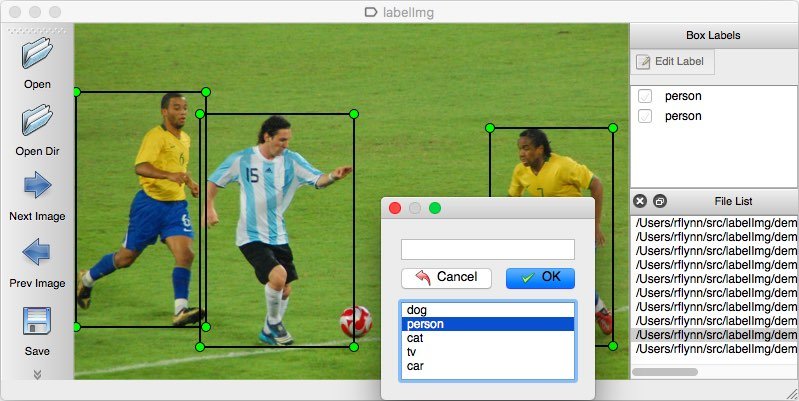
LabelImg Alternatives
If you are looking for a simple, easy-to-use, lightweight image annotation software for object detection and classification, LabelImg will be a suitable tool to start. It is especially useful for student projects and small-scale prototypes because it’s easy to install and run on a local PC.
However, if you are looking for a professional and enterprise-grade image annotation, you will need more functionality beyond the basic functions of LabelImg. Businesses usually need a hosted image annotation solution to manage user access with different roles and protect sensitive images and videos.
Also, other image annotation solutions provide more annotation editor features and semi-automated image annotation that saves a lot of time and costs. Image annotation platforms provide integrated data collection and dataset management capabilities, along with multiple export format options.
While there are many computer vision annotation services, the most popular option is called CVAT (Computer Vision Annotation Tool). It was developed and open-sourced by Intel.
The professional computer vision annotation tool CVAT is fully integrated into the Viso Suite platform. Viso Suite provides an integrated set of tools to manage AI models and rapidly develop, deploy, and operate computer vision applications.
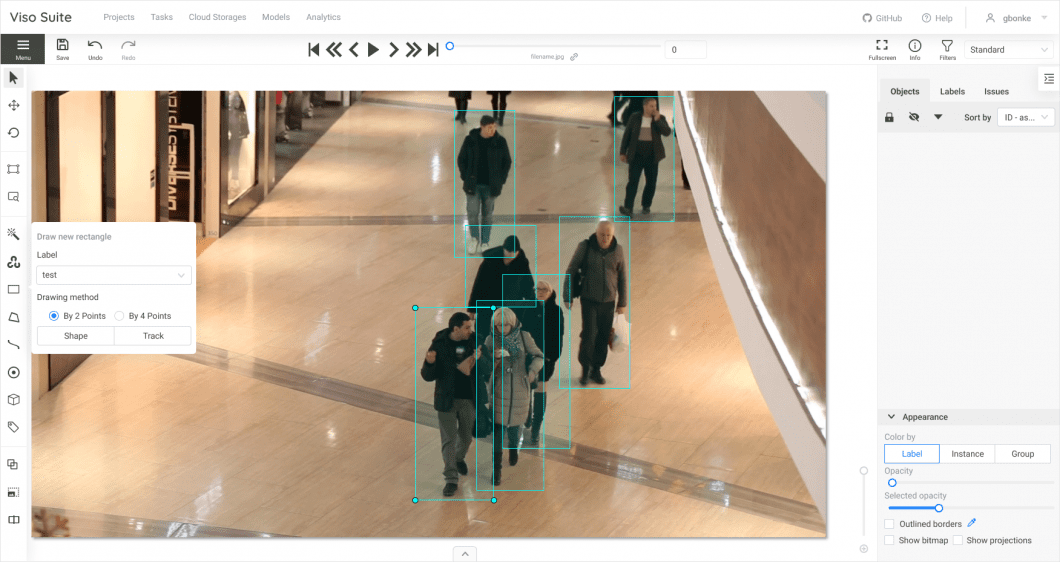
How To Install LabelImg
LabelImg does need some level of technical awareness (such as using the command line) to work efficiently. The simplest way to download and install this software tool is through pip, assuming you already have Python 3 on your device.
So, simply run the following code in your command line: pip3 install labelImg. Subsequently, you can launch LabelImg by typing labelImg in your command prompt.
If you need more specific instructions on your device (e.g., Python2 on Linux, Windows, and Mac, or using LabelImg on Anaconda), you can go through the README section for in-depth instruction on installation.
Short LabelImg Tutorial: How To Use LabelImg
LabelImg supports labeling in YOLO text or VOC XML file format. It is recommended for users to use the default VOC XML format for producing labels. Because it is the format of ImageNet, it is a universal standard, as it is associated with object detection, whereas different YOLO implementations have different text line formats. Additionally, you can easily convert from VOC XML to any other format using tools. For example, you can convert from VOC XML to COCO JSON.
Steps to Follow for Labeling Images:
- After downloading the image annotation tool, you need to install dependencies. You need to enter the “labelImg” folder using the command prompt.
- Following this, you need to install a library called “pyqt5“.
- Next, you need to define custom classes.
- To activate your tool, you need to type “labelImg.py” in your command prompt. Now, you’ll see an interactive window, which is an open-source tool.
- Click on “Open Dir” and choose the folder where you have saved the images that you will label.
- Later, click on “Change save Dir” as you will need to select the directory to save your labeled file. This directory should be different from the image directory.
- Now, use the “Create Rectbox” option to draw boxes over the images and click “Save.” This will generate a file with the box coordinates.
- You can now draw more than one box in an image. It will ask you for a class to assign; choose the category you defined in your previous step.
- Lastly, you now have a folder that will image label data with the same name as your image. Your data is ready for object detection.
The Bottom Line
Image annotation is critical for computer vision models. The performance of the ML models greatly depends on the quality of the training dataset. The process of labeling images is very tedious and requires manual work.
The advantages of LabelImg are based on its simplicity and ease of use, for example, to train YOLOv3 algorithms. However, it lacks the features needed for it to be useful for larger-scale and professional use, such as security and privacy, annotation editor tools, semi-automation, and system integration. CVAT is a popular alternative for team collaboration with file storage integration and task management.
The Viso Platform provides all the image annotation capabilities for large organizations and enterprises out of the box. Viso Suite is an end-to-end computer vision platform that also covers all the steps of the AI vision lifecycle. From data collection, annotation, training, development, deployment, and monitoring, Viso Suite places full control of large-scale deep learning systems in the hands of ML teams. Get in touch with our team to learn more about image annotation with Viso Suite.
To continue learning about computer vision and machine learning, check out our other articles:
- A Deep Dive into Text Annotation
- Decoding Movement: Spatio-Temporal Action Recognition
- MLflow: Simplifying Machine Learning Experimentation
- Xception Model: A Deep Dive into Depthwise Separable Convolutions
- What are Liquid Neural Networks?
- Neural Radiance Fields (NeRFs): A Technical Exploration
